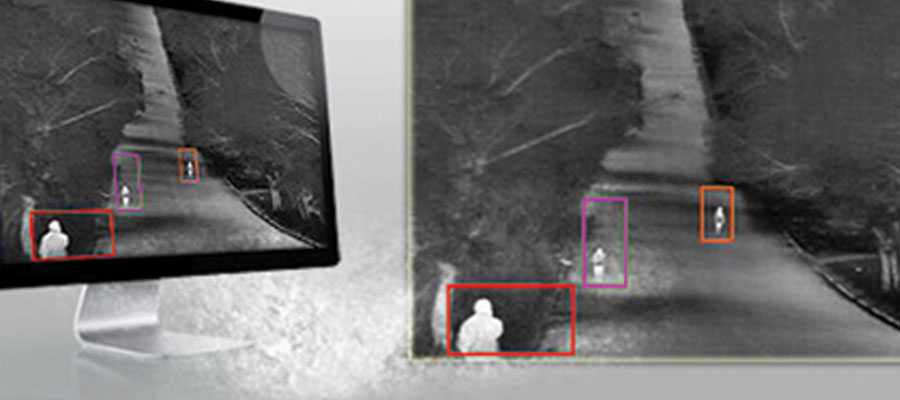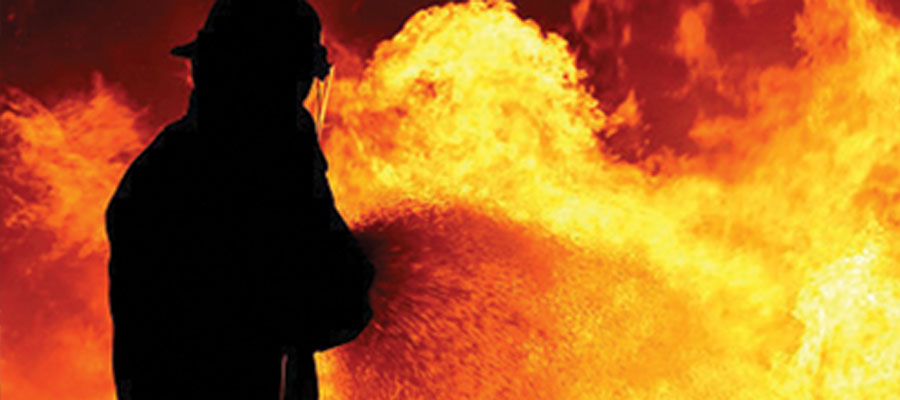
Solutions

Fibre Acoustic Sensing Cable
Unlike conventional point sensors, Distributed Acoustic Sensor (DAS) technology uses the entire fibre optic cable as the sensor, enabling continuous, real-time visibility along its entire length. With this technology you can achieve superior coverage over great distances, providing unrivalled sensory data and deeper insights. This is particularly beneficial in the telecoms, energy, security, infrastructure, and road and rail sectors, to optimise day-to-day operations.
Read more ...A DAS interrogator is connected to one end of a standard single optical fibre and it uses a laser to send thousands of short pulses of light along that fibre every second. A small proportion of this light is reflected back in a process known as Rayleigh backscattering. When the fibre is disturbed, the backscatter is interrogated for changes in characteristics caused by acoustic energy, vibrations, temperature and strain.
This process turns the length of a standard optical fibre into thousands of extremely sensitive acoustic and vibration sensors. Disturbances are detected, monitored and tracked by the DAS interrogator. Data is processed in real time, advanced algorithms recognise the unique signatures of each type of event and any that are of concern are immediately reported.
The precise location of the threat and any additional data is provided, giving the system operator an opportunity to make a proportionate response where events are concerning. With unrivalled sensory data, customers can solve business-critical challenges in a timely manner.

CCTV (Closed-circuit television)
CCTV or Closed Circuit Television refers to a visible or covert video system intended for only a limited number of viewers. In Closed Circuit TV (CCTV), the picture is viewed or recorded, but not broadcast. It was initially developed as a means of security for banks and casinos; however, today it has been developed to the point where it is simple and inexpensive enough even to be used with home security systems, and for everyday surveillance.
Read more...IP surveillance is a digitized and networked version of closed-circuit television (CCTV). In an IP surveillance system, an IP camera records video footage and the resulting content is distributed over an IP (Internet protocol) network.
C3 can provide you with an analogue or IP surveillance system designed to suit your unique requirements.

Fire protection and suppression
Fires are a major cause of critical hardware downtime, which can interrupt the normal operations of a business. While this results in the immediate loss of productivity and potential opportunities, there is also the longer-term damage done to the company’s brand. Highly effective fire suppression systems are crucial as they limit the potential damage caused by fires.

Command and control centres
C3 can design and install your custom made control room, complete with a highly skilled control room operator and easy to use video management software. Due to the long life span of a control room and the fact that it is an integral part of the security system, C3 pays special attention to its design. Often the control room is seen as a place where technical equipment is installed rather than a site where people work to bring together all the information and realise the value of the technology.
Read more...Many factors have to be taken into consideration when designing a control room such as space, lighting, aesthetics, airflow, ergonomics and of course, functionality. What is visually impressive is not necessarily the most effective. The best-designed control rooms are often those where the most thought has gone into what needs to be accomplished in the control room.

Intelligent video analytics
C3 pioneered the use of intelligent video analytics combined with thermal cameras in South Africa and have had huge success with the implementation of these two military grade technologies at various sites both in and out of South Africa.
Read more ...Security operators cannot effectively monitor multiple surveillance cameras and it's a well-known statistic that after just 22 minutes an operator misses 95% of scene activity. Intelligent video analytics are designed to automatically detect threats and distribute intelligent alerts to the right personnel in real time, thus allowing security personnel to effectively manage threats to the organization rather than focus on detecting them.
C3 has numerous projects and case studies involving analytics, from the tunnels of the Gautrain rail to the perimeters of upmarket residential and golfing estates. We have deployed analytics successfully at classified National keypoint sites, power stations, precious metal refineries, and general facilities. The key to our success is due to the extensive training of our technical staff coupled with a superior product.

Integrated security management system
Classic PSIM is, really, about connecting multiple security and fire solutions into a single computer platform equipped with the intelligence to interface with all the data within all the systems involved, correlate it, and determine when security events are merging.
Read more...Founded in 2001, PSIM software caters to the needs of city planning and civil engineering projects’ security, but also provides security support for railway and metro projects, airports, corporate enterprises, homeland defence, hospitals, maritime ports and harbours, border control, police, and oil and gas facilities the world over.
With six key capabilities, management of an entire enterprise can be tackled on one comprehensive user interface that can quickly and cost-effectively be customised to meet the exact requirements of every user for any company.
By ordering the massive influx of data received from various security channels like CCTV, for example, PSIM can arrive at accurate visualisations and reports with the aim to detect, visualise and resolve threats according to specific criteria established for your custom interface.
At C3, we are at the coalface of PSIM, connecting systems and other platforms in a cohesive, effective way to enhance security across a broad spectrum, and thereby increase productivity.

Perimeter intrusion detection (PIDS)
A Perimeter Intruder Detection System (PIDS) is usually installed in an outdoor environment at the perimeter limits or around sensitive, high-risk areas. The system is designed to detect, deter, and delay an intruder which provides critical time for security teams to respond to any unauthorised intrusion. The strategic application of external intruder detectors can provide significant cost savings in terms of manpower, loss recovery and damage limitation, quickly recovering the initial capital outlay.
Read more ...However, it is more difficult than designing systems for the controlled environment found inside most premises as we need to have a system that not only suits the type of perimeter but also one that can perform equally well in all extremes of weather conditions.
Access control, CCTV, intelligent video, etc.. all form part of the PIDS as well as invisible buried detection systems, fence security using microphonic and fibre optic cable, microwave barriers and Doppler detectors, infrared systems using beams and barriers, taut wire and fibre optic detection systems. All these can significantly enhance the performance of any perimeter security. C3 can provide innovative and effective solutions to combat all forms of perimeter intrusion.

Thermal cameras
C3 are the experts in thermal surveillance for intrusion detection. We combine our thermal cameras with intelligent video analytics, allowing for instant visual verification of the exact cause and the location of any perimeter breach, day or night. The benefits of thermal cameras over conventional CCD cameras are numerous.
Read more...Let's take a look at a few of the advantages:
- Visible image day and night in total darkness without the need for any ambient light
- Visual penetration through rain / mist / fog far greater than CCD<
- Low maintenance - does not require cleaning of optics
- Direct or reflective light shining into the camera lens does not affect picture image
- Thermal cameras combined with video analytics can detect intruders at greater distances than CCD's and therefore far fewer cameras are needed. This is far more aesthetically pleasing especially in residential estates.
- Power consumption is considerably less when compared to CCD cameras combined with IR illuminators.
- Thermal cameras do not work off visible light but rather infrared light (heat / radiation) therefore the cameras can still detect intruders that are dressed in dark or camouflaged clothing.
- Thermal cameras are considered leading-edge technology. Intruders in total darkness are not aware of the camera's capabilities and might believe they are moving through the field of view undetected.

Intelligent fire detection
SigniFire is a turnkey video, flame, reflective heat, smoke and intrusion detection solution. This camera-based fire detection system, visually detects the presence of fire or smoke at its source, independent of airflow in the area. SigniFire represents a critical advantage for early warning fire detection, identifying and reacting to fire situations in their earliest stages, protecting lives and property.
Read more...The advantages of the Visual Based Fire Detection (VBFD) over conventional methods are numerous.
- • NFPA 72 and FM approved.
- • Early warning - detects flame / smoke in seconds at the source.
- • Visual verification - supplies vital situational awareness through live video to the location of the fire.
- • Challenging areas - perfectly suited to detect fires in large open spaces which are a challenge for conventional methods.
- • Triggers fire alarm systems.
- • Provides pre-recorded video forensic evidence for future fire investigations.
- • Security surveillance - in addition to fire detection SigniFire can be used simultaneously for video surveillance.
- • Simple installation - can be installed lower than ceiling height and is non-disruptive to working hours. C3's fire protection service includes detection and suppression with internationally approved products.
